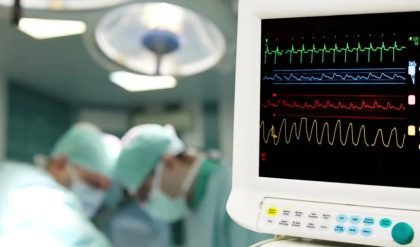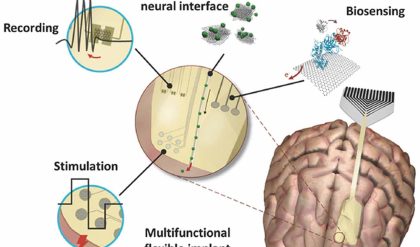Over the last several decades, various advances in tissue engineering have allowed for the not so distant possibility of replacing, repairing, or regenerating injured tissues1. Significant progress has been made in understanding cellular biology as well as pathophysiology and healthy states of tissues. Additionally, a suite of diverse biofabrication technologies and biomaterials has been conceived, enabling fabrication of complex 3D tissues with greater physiological relevance compared to the traditional 2D context that cells are studied in2. However, the field of tissue engineering still has unresolved questions involving choice of fabrication technique, biomaterial, cellular niche, or even cell type when designing a synthetic tissue.
While different fabrication techniques and biomaterials have been explored in fabricating tissues in vitro, the use of stem cells in engineered tissues is ubiquitous. Not surprisingly so, as biologists continually demonstrate novel ways of directing different lineage commitment of stem cells and further unlocking their vast regenerative potential3. Indeed, stem cell banks have emerged to cryogenically store a patient’s own cells as the therapeutic potential of stem cells is being positively demonstrated in multiple clinical trials4. With over 450 mesenchymal stem cell (MSC)-based trials alone currently ongoing or completed, the regenerative and immunoregulatory properties of MSCs are constantly being exploited to improve the quality of human life5.
Due to the immense therapeutic potential of MSCs, there is a need to rapidly and reproducibly grow a vast amount of MSCs for clinical and research purposes. Although MSCs were identified and isolated from bone marrow more than 40 years ago, we still have not fully mapped their biological characteristics3.
Additionally, even though the first MSC clinical trial occurred in 1995, we still do not have a complete understanding of their therapeutic potential and effects6. Large expansion of MSCs for research purposes is especially desirable for fabrication of synthetic tissues in vitro, especially as many available technologies are demonstrating the ability to generate tissues in the micro- to milli-liter volume scale7. Additionally, as the cost of biofabrication devices is decreasing, thanks in part to open-source hardware initiatives, and novel biomaterials are being developed, the through-put and scalability of tissue fabrication is growing. Rapid expansion of MSCs will allow for more experimentation in vitro, granting for more thorough validation and better data before translation to clinical work is considered.
Rapid expansion of RoosterBio hMSCs with the paired High Performance Media has allowed us to quickly optimize different labeling strategies of hMSCs with fluorescent reports. We have previously demonstrated stable transduction of RoosterBio hMSCs with a second-generation lentivirus. We have achieved dual-labeling of hMSCs expressing green fluorescent protein (eGFP) in the cytoplasm and H2B-mCherry in the nucleus8,9 (Fig. 1A). Compared to cell staining, constitutive labeling allows us to monitor cell behavior transiently, in a non-destructive manner, throughout our studies. Dual-labelling of hMSCs has been most useful in co-culture studies where cell-cell interaction and morphological and spatial changes can be easily monitored non-destructively at multiple time points. Additionally, dual-labeling allows us to identify cytoplasmic and nuclear regions in aggregates that are encapsulated in a 3D context (Fig. 1B). We have also shown osteogenic (bone) differentiation of unlabeled hMSCs seeded on 3D printed PCL platforms9 (Fig. 1C-D).
As we look toward the future, we believe that fundamental engineering and biological concepts should further fuse to maximize the translational capacity of stem cells. The challenge tissue engineering poses is ambitious, however — developing more physiologically relevant in vitro models by incorporating approaches from both fields will progress medicine and drastically improve the quality of human life. Additionally, akin to stem cell banking for clinical use, rapid expansion and copious cryopreservation of a batch of stem cells for research use (i.e. a thaw-and-use stem cell product, such as RoosterRTP) will allow researchers the ability to perform experiments faster, with more consistency and reliability, as studies can be performed with cells right out of thaw.



